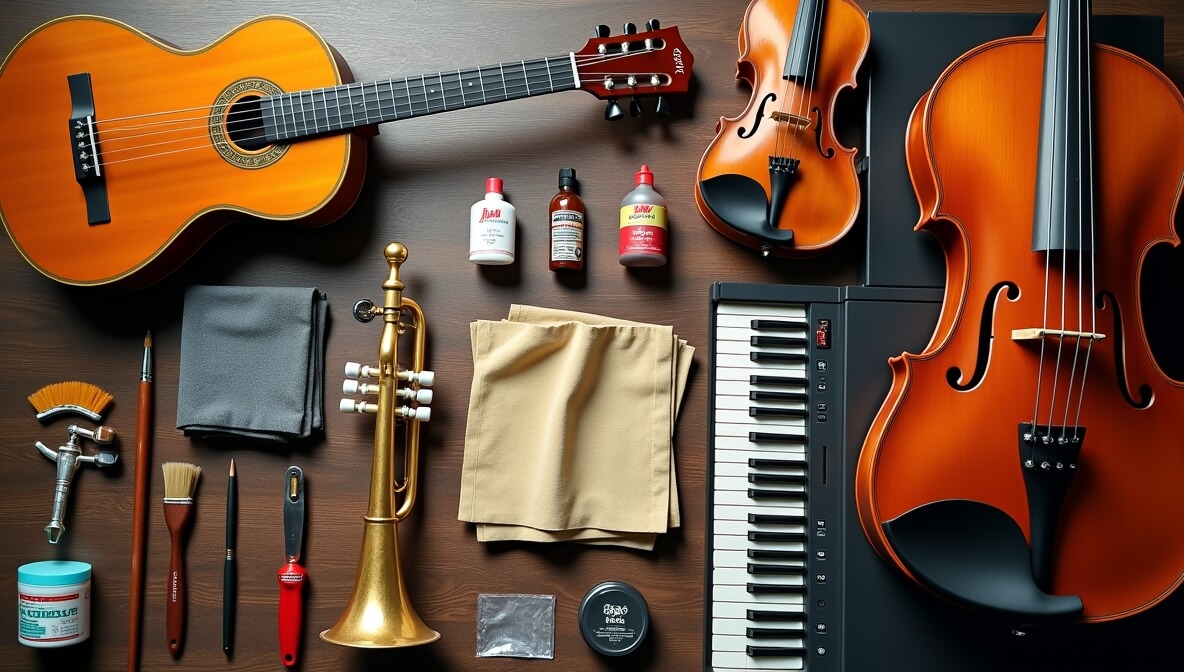Musical instruments are more than just tools for creating sound — they are deeply personal companions in your creative journey. Whether you're a seasoned performer, a passionate hobbyist, or just starting out, proper cleaning and maintenance will not only extend your instrument's life but also preserve its tone, feel, and performance quality.
This guide walks you through expert-level cleaning strategies, essential tools, and storage tips to keep your instrument in prime condition — so every note you play resonates with clarity and emotion.
1. Understand Your Instrument’s Specific Needs
Each musical instrument comes with its own care requirements depending on its materials, construction, and playing method. Ignoring these nuances can lead to unnecessary wear or even permanent damage.
- Guitars & Basses: Wipe down strings after every use to reduce corrosion. Clean the fretboard using lemon oil or conditioner every few months (especially for rosewood or ebony).
- Pianos: Dust keys and the soundboard regularly with a dry microfiber cloth. Avoid spraying liquids directly on the keys — always spray onto the cloth first.
- Violins, Violas, Cellos: Rosin dust can accumulate quickly — gently clean it off with a soft, dry cloth. Avoid over-tightening the bow.
- Brass Instruments (e.g., trumpets, trombones): Rinse tuning slides, mouthpieces, and lead pipes monthly. Use valve oil to keep parts moving smoothly.
- Woodwind Instruments (e.g., clarinets, saxophones): Swab the bore after every use. Rotate reeds to avoid warping and store them flat in reed cases.
For a deeper understanding of how instruments function — especially for beginners — check out The Ultimate Guide to Music Reading for Beginners — Notes, Rhythms, and Symbols. It’s a great primer on the elements that make instruments tick.
2. Invest in the Right Cleaning Tools
The most common mistake musicians make is using household items that can scratch or corrode delicate surfaces. Here's what you should have in your cleaning arsenal:
- Microfiber Cloths: Lint-free and ideal for daily wipe-downs.
- Soft Brushes: Useful for cleaning dust from hard-to-reach areas such as tuning pegs, bridge parts, or under piano strings.
- Bore Swabs & Pad Papers: For wind instrument players to maintain hygiene and tone clarity.
- Instrument-Specific Polishes: Never use all-purpose cleaners. For example, violin varnish requires a specific polish to maintain finish and acoustics.
- Valve Oils & Slide Grease: Essential for brass instruments to prevent stiffness and wear.
If you're also working with microphones, audio interfaces, or monitors, cleanliness matters more than you think. Explore Understanding Audio Interfaces to learn how dusty or poorly maintained hardware can compromise your sound quality.
3. Strings, Pads, and Reeds: Know When to Replace Them
Over time, these components degrade — affecting both playability and sound.
String Instruments (Guitar, Violin, etc.)
- Change strings every 3–6 months, depending on frequency of use.
- Look for signs like rust, discoloration, or loss of tone.
- Always clean strings after use to extend their lifespan.
Woodwinds
- Rotate reeds every session if possible.
- Reeds last about a week to two weeks with regular playing.
- Pads should be checked for sticking or tearing during professional service.
Brass Instruments
- Oil valves before each session for smooth performance.
- Clean and grease tuning slides monthly.
Want to understand how instrument care ties into your digital workflow? Dive into Digital Audio Workstations Explained — Choosing the Right Software for tips on optimizing your environment — from strings to studio.
4. Proper Storage is Non-Negotiable
Environmental factors like humidity, temperature, and dust are among the top causes of long-term damage to instruments.
- Use Hard Cases: Especially for string and brass instruments, to protect against accidental knocks and temperature changes.
- Humidifiers/Dehumidifiers: Wooden instruments (like guitars and violins) are highly sensitive to humidity swings. Aim for 40–60% relative humidity.
- Wall Mounts & Floor Stands: Great for display and quick access, but ensure the mounts are padded and secure.
- Avoid Direct Sunlight: It can warp wood and fade finishes.
5. Don’t Skip Professional Maintenance
Routine check-ups from a trained technician can prevent small issues from becoming costly repairs. Here’s when to book one:
- You hear unusual buzzing, stiffness, or tonal issues.
- Pads or keys feel loose or sticky.
- You notice cracks, joint looseness, or finish damage.
- It’s been over 12 months since your last full servicing.
Professionals can offer precision tuning, internal cleaning, and component replacement that home maintenance can’t match.
Bonus Tips for Multi-Instrumentalists
If you play multiple instruments or produce music at home:
- Label and separate cleaning tools for each instrument to prevent cross-contamination.
- Maintain a calendar for string changes and service dates.
- Store digital gear like MIDI controllers and headphones in dust-proof cases.
- Regularly back up digital presets, recordings, and settings — cleanliness isn’t just physical!
Final Thoughts
Your musical instrument is a reflection of your artistry — and like any prized possession, it thrives on attention, care, and respect. By integrating a consistent cleaning and maintenance routine, you’ll ensure every note you play is rich, expressive, and technically flawless.
Remember: The more love you show your instrument, the more it will give back in tone, reliability, and creative inspiration.
